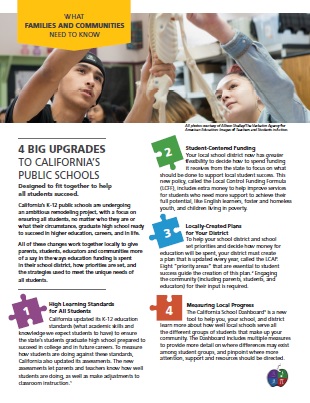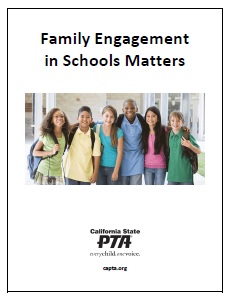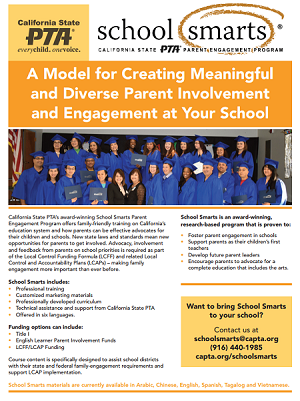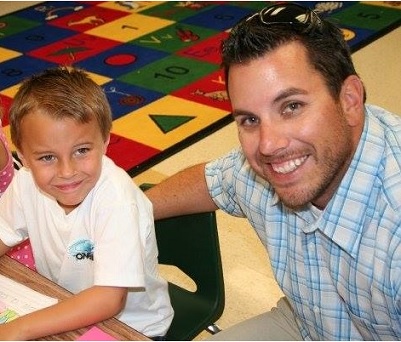By California State PTA Family Engagement and Communication Commission

Futureproof, written by technology writer Kevin Roose, offers new perspectives and interesting food for thought on matters that shape the relationship between families and schools today. The book suggests “nine rules for humans in the age of automation.” It’s an important topic if you want to ensure that your children’s education stays relevant in future job markets while also supporting their social and emotional health. As artificial intelligence (AI) becomes increasingly integrated into every aspect of our lives, at work and at home, how can we protect people from being replaced by automation and preserve our humanity?
Among the author’s more interesting insights is that rather than try to compete with computers in terms of productivity and efficiency – where the computers have the upper hand, so to speak – we should focus on developing those human skills and attributes where we do have the advantage: our creativity, our ability to make sense out of novel and chaotic situations, and our capacity to understand and personally relate to the feelings of other humans. Our future success depends on being able to do the things that the computer can’t do – things that highlight the efforts and contributions made by other people (examples include products or services described as artisanal, concierge, personal, or hand-crafted).
PTA has a role to play
Roose recommends we “build big nets and small webs.” The term big nets refers to the kinds of social safety programs established to protect children, youth, and families in times of crisis (a common focus for PTA advocacy efforts). PTAs themselves can be thought of as small webs since our local associations are frequently on the front lines finding creative ways to help families when they find themselves in need or distress, as recently demonstrated during the pandemic. For many members of our school communities, PTA activities and support for family engagement offered a means of resilience, encouragement, aid, and friendship during difficult times.
Recent news stories about the lack of accountability among social media companies and the implications of the content they relentlessly provide may be motivating you to reexamine technology use in your own households. It could be time for you as PTA leaders to consider the growing influence of the digital world more broadly and decide how that should influence PTA strategies for family engagement related to the education offered in your local schools.
Implications for what schools teach
Roose notes that while “many ideas have been proposed and tested for bringing our educational system into the twenty-first century,” most have dealt primarily with how we teach, rather than what we should teach. His recommendations for practical skills that maximize the advantages of people over machines include:
- Attention Guarding – Finding ways to maintain our focus despite a persistent onslaught of external forces trying to distract us. This isn’t simply a matter of maintaining productivity but is important in our ability to exercise control over where we choose to direct our attention.
- Room Reading – It takes emotional intelligence to be able to “read a room” – a skill that is valuable in the workplace. Roose suggests that women, racial minorities, and LGBTQ people may be particularly adept at this as it has long been an essential skill for their success in the dominant culture.
- Resting – A surprising skill to cultivate is the ability to allow yourself sufficient rest to help prevent burnout and exhaustion, and to reconnect with our human selves. Roose suggests, “In the automated future, as more of our contributions come from big breakthroughs, inspired ideas, and emotional aptitude, being well-rested is going to become even more critical.”
- Digital Discernment – As people increasingly get their news and information from social media networks, it becomes ever more important to engage critical thinking skills to distinguish truth from fiction and to differentiate between credible sources and sponsored content. “…It’s going to get even harder in the coming years with the rise of algorithmically generated text, realistic conversational AI, and synthetic video (‘deepfakes’) produced with the help of machine learning,” Roose cautions.
- Analog Ethics – In an age when our value will come from our ability to relate to other people, Roose asserts that treating people well, acting ethically, and behaving in prosocial ways will remain essential to lifelong success. Schools that offer social-emotional learning programs to children are more likely to produce well-socialized, responsible adults able to cope with change.
- Consequentialism – Organizations that create or use AI systems need to anticipate the ways these products can be misused, exploited, or gamed. Consequentialist thinking can be useful both in spotting flaws in technological systems before they cause catastrophic problems and, in other areas such as medicine, law enforcement, and human rights, being alert to where significant opportunities for error exist. Roose recommends incorporating consequentialist thinking as a standard part of STEM curriculum.
In the book’s final pages, Roose urges readers to step into the broader conversation, to “learn the details of the power structures that are shaping technological adaptation and bend those structures toward a better, fairer future.”
This is certainly an opportunity for family and PTA engagement – to use our collective influence to help shape education, public policy, and the technological landscape to benefit children, youth, and families.
 California State PTA in partnership with Create CA is pleased to launch the newly revised Parents’ Guide to Arts Education in California Public Schools. This guide provides an overview of what your child will learn in the arts disciplines of dance, music, theatre and the visual arts by the end of each grade level.
California State PTA in partnership with Create CA is pleased to launch the newly revised Parents’ Guide to Arts Education in California Public Schools. This guide provides an overview of what your child will learn in the arts disciplines of dance, music, theatre and the visual arts by the end of each grade level. California’s K-12 public schools are undergoing an ambitious remodeling project, with a focus on ensuring all students, no matter who they are or what their circumstance, graduate high school ready to succeed in higher education, careers, and in life.
California’s K-12 public schools are undergoing an ambitious remodeling project, with a focus on ensuring all students, no matter who they are or what their circumstance, graduate high school ready to succeed in higher education, careers, and in life. Here are a few steps you can take to develop a college savings road map for your child:
Here are a few steps you can take to develop a college savings road map for your child: Download:
Download:
 Download the information, available in multiple languages:
Download the information, available in multiple languages: